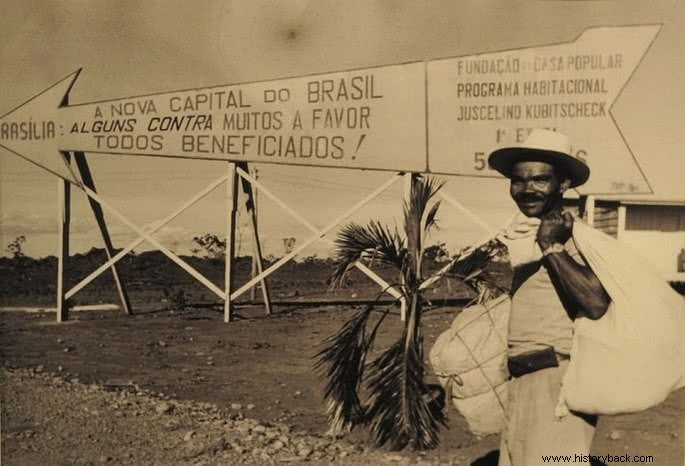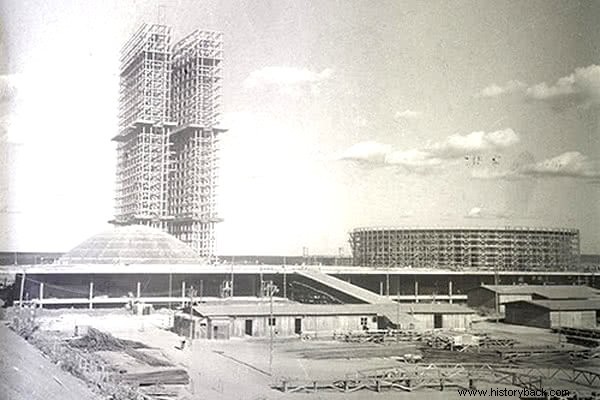The Construction of Brasilia took place between 1956 and 1960. The move of the capital of Brazil, from Rio de Janeiro to the Central Plateau, required an enormous amount of financial, material and human resources.
President Juscelino Kubitschek, however, used it as nationalist and modernist propaganda in order to exalt his government.
Brasília, in addition to being the capital of Brazil, is also the seat of the Federal District.
The dream of Brasilia
The idea of transferring the capital of Brazil to the interior was already foreseen in the Constitution of 1891.
In 1892, the Belgian Louis Cruls, designated a territory in the Central Plateau, between river sources that would be ideal for the construction of the new political center.
There was also the prophecy of St. John Bosco, pointing to the space between parallels 15 and 20 as the birthplace of a new civilization.
The fact is that JK was looking for a place far from Rio de Janeiro and in the middle of the desert for geopolitical reasons:
- the capital would not be so vulnerable in case of war,
- popular pressure on the government would be less,
- the new capital would contribute to the occupation of the Brazilian interior.
In this way, the construction of Brasília was integrated into the Plan of Goals proposed by the president during the electoral campaign.
See everything you need to know about the Goal Plan.

Historical Context
Europe and the United States were experiencing a period of economic recovery after World War II. The winds of optimism reached Brazil, with investments in the manufacturing industry.
The 50's would still bring the first World Cup title to Brazil, in 58. Equally, bossa nova becomes the national music and the soundtrack of this time.
Construction of Brasilia
Despite criticism from politicians such as Carlos Lacerda, the opposition approved the plan and gave JK carte blanche to do so.
The project for the new city was chosen through a public tender. The winning plan was that of the Rio de Janeiro architect Lúcio Costa, while Oscar Niemeyer would be responsible for the design of the buildings.
Thus began the mobilization of materials, workers and resources to build the city in the desert. All these actions were commanded by the company NOVACAP, chaired by Israel Pinheiro. Brasília's main structure, the so-called Plano Piloto, was ready in just four years.
It is estimated that the city has attracted around 60,000 workers from all over Brazil. These workers became known as “candangos”. To house them, sheds were built with minimal comfort structures. In 1957, the surroundings of Brasília already had more than 12,000 inhabitants.
Still with a lot to do, the new capital was inaugurated on April 21, 1960 in the midst of a great party. In the following years, ministries, embassies and other political bodies would leave Rio de Janeiro and settle permanently in the new Brazilian capital.

Material and human cost
Six months before the end of the works, the budget for the construction of Brasília had ended.
Unable to obtain loans from the IMF, the president sold government bonds and issued currency. These two facts led to an increase in inflation and the cost of living. In 1969, it is estimated that Brasília would have cost more than 45 billion dollars.
Workers were also under pressure of all kinds to rush construction. From the two-shift journey to pay hold and water cuts.
There was no specific protective equipment and it is estimated that more than three thousand workers died during the works.
Read Also :Migration Movements in Brazil
Curiosities
- “Brasília - Sinfonia da Alvorada” was a piece composed by Tom Jobim and lyrics by Vinícius de Moraes for the inauguration of the city. However, due to delays in the works, the symphony would not premiere until a year later.
- In 1987, UNESCO declared the city a World Heritage Site.
